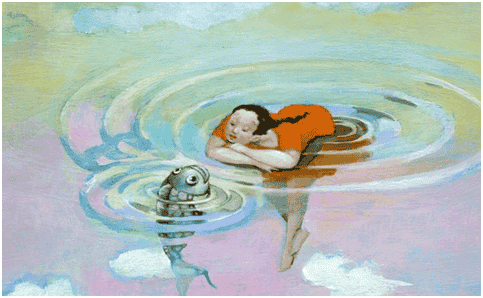
Last update: May 05, 2020
Feelings are more elaborate realities than emotions. They include the latter, but they also consist of a rational element, have a longer duration and deeper roots. There sentimental maturity it can therefore be defined as a feeling produced by experience and emotional intelligence.
Sentimental maturity is never absolute, however, when a certain level is reached, it becomes a relatively stable personality trait. Being the result of a work on oneself, in fact, it is not too sensitive to the succession of events.
“The greatest form of maturity is at harvest time. This happens when we have to learn how to reap without complaining if the quantity is scarce and how to reap without apologizing if the quantity is abundant. "
-Jim Rohn-
As with other psychological realities, sentimental maturity is not so much a concept or a discourse, but the updated result of a practice. It is implemented through various skills, attitudes and behaviors. Let's see some of them.
Manifestations of sentimental maturity
1. Self-knowledge
Self-knowledge is the ability to objectively identify the characteristics that define us. It presupposes having also developed the capacity for self-observation, that is, knowing how to review one's own actions and draw conclusions from them.
Self-knowledge also allows us to predict our reactions to various situations, as well as to recognize our inclinations and aversions. It affects the ability to be aware of one's actions and to identify one's motivation.
2.Search for stability
One of the typical traits of sentimental maturity is the search for stability. This should not be confused with the need to create comfort zones in which to settle nor with the desire to stand still and stop moving forward.
The search for stability is rather about the need to give continuity to one's actions and to ensure that they are linked together. It is opposite to dispersion. You can be an adventurer, but stable in your way of life. True instability consists in repeating cycles of starting something and never ending completely, but always moving on to a new beginning.
3 Realism
The ability to adapt to facts, to appreciate them for what they are, minimizing the mediation of subjectivity. In other words, trying to see the world as it is, not as we would like or fear it to be.
Realism leads to sentimental maturity and this, in turn, reinforces realism and adaptation. They are two dimensions that feed each other. Being realistic does not mean stopping dreaming or having illusions, rather recognizing the difference between what happens inside us and what happens outside.
4. Take care of all dimensions of the personality
Another aspect in which sentimental maturity is reflected is the ability to explore the different dimensions that make up our life. We are body, spirit, creation, thought, fullness, suffering ...
Too many times we limit our existence to the work, sentimental or family sphere. Or maybe we just engage in pain or fun, trying to escape from everything else. A full life touches all the different dimensions of being.
5. Understand the ups and downs
When you reach sentimental maturity, you understand that ups and downs are inevitable in life. Any situation, however stable, involves right steps and missteps, moments of sadness or joy, of satisfaction and the discovery of limits.
With maturity we understand first of all that a negative moment does not mean that everything falls apart, nor that a positive moment indicates that everything will always be okay. We come to understand that life is like this and that it is worth living it, without running away or escaping.
6. Coherence between realism, will and commitment
Self-knowledge and realism lead to a condition that is an integral part of sentimental maturity: consistency. The ability to do what you want while taking responsibility for it.
A balance is achieved between intentions that turn into commitments, the will to fulfill them and the desire for it to be so. There is no room for regrets about one's current or past life. You simply live the way you want to live and bear the cost that comes with it.
7. Self-regulation
Self-regulation is the ability to modulate reactions and actions by adapting them to the context and objectives. Avoid that the intensity of emotions or reactions does not turn into an obstacle for oneself.
Self-regulation does not mean repression. It is not about “putting up with” or letting go. The concept is knowing how to express what you feel in a way that is understood and stimulates understanding, not conflict.
There are few aspects for which the human being reaches full maturity. Those listed are aspects of life on which one must never stop working, in the constant search for the best balance point. If we succeed, our life will be fuller.


























